Phosphorous = Algae
WI and MI move forward; OH lags
Great Lakes States are enacting legislation to ban phosphorous from mature lawn fertilizers. Minnesota has already passed legislation, and Michigan and Wisconsin are moving forward.
You can read about Wisconsin's recent decision here.
Macomb County, Michigan, along with other counties in that Great Lakes State, are working to ban fertilizers that contain phosphorous. You can read more about this here.
While Michigan counties are banning phosphorous fertilizers, Democrats in the Michigan House are working on state-wide legislation. You can read about this here.
Ohio still needs legislation. Please contact your Elected Officials!
~ ~ ~ ~ ~ ~ ~ ~ ~ ~ ~ ~ ~ ~ ~ ~ ~ ~ ~ ~ ~ ~ ~ ~ ~ ~ ~ ~ ~
"GREEN GOO FINDS NEW HOME"
Mark Bush, Senior Producer and Reporter for the Environment Report, came to Maumee Bay to interview shoreline property owners plagued by the Lyngbya wollei invasive algae. You can listen to or read Mr. Bush's report here.
Lyngbya wollei algae, which can cause rashes with body contact, appears in April and stays until very late-autumn or early-winter.
This matted, wool-like algae, which was first observed in late-summer 2006 along the shores of Maumee Bay, has now spread east to Reno Beach and is clogging commercial nets.
The algae builds upon itself, and tends to hug the shoreline, but it has also been observed further out in Maumee Bay. An algae mound the size of a house was recently spotted out on the Bay, says Tom Bridgeman of the University of Toledo Lake Erie Center.
On December 30th and 31st, Northern winds pushed massive algae blankets up along the shores of Maumee Bay. To start off the New Year, on January 1st an eagle was seen perched on a Lyngbya wollei algae mound.
Clearly we have a problem!
If you have seen this algae in areas east of Maumee Bay State Park or on the Northern Shores, please write to Waterkeeper Sandy Bihn at sandylakeerie@aol.com
~ ~ ~ ~ ~ ~ ~ ~ ~ ~ ~ ~ ~ ~ ~ ~ ~ ~ ~ ~ ~ ~ ~ ~ ~ ~ ~ ~ ~
There is good algae, and there is bad algae.
A proportionate quantity of algae to algae feeders in a body of water is indicative of a healthy body of water because, naturally, certain types of algae serve as food for certain types of fish. In some cultures, humans use algae for food. After all, seaweed is algae!
However, when a disproportionate quantity of algae to algae feeders is found in a body of water, we have an unhealthy body of water. Or, when a species of algae is introduced into a body of water without natural algae feeders present, such as in the case of the Lyngbya wollei invasive algae, it can cause tremendous destruction to a previously healthy ecosystem.
These algal blooms consume all the oxygen in water, killing off other aquatic life. This death by oxygen-deprivation is known as anoxia. The aquatic life in Lake Erie has perished by anoxia before, and the lake was declared dead. The way things are going, it could happen again.
Algal blooms feed on an excess of nutrients present in the water, namely nitrogen and phosphorous. Though declared dead in the 1960s, Lake Erie, with States such as Michigan and Ohio banning the sale of laundry detergents containing phosphorous in them in the '80s, was able to breathe and recover in the late-'80s and early-'90s.
However, since 1995, dissolved phosphorous has been steadily increasing. There are many sources for this phosphorous: agricultural runoff, factory farms (CAFOs), dishwasher detergents, wastewater discharges, zebra mussel excretions, lowering water levels, increasing temperatures, power plants heating the water, lawn fertilizers and more.
You can help by looking for how much phosphorous is in your dishwasher detergent, as some brands can have over 8% phosphorous. Click here to compare the phosphorous content of dishwasher detergents.
Another simple way that you can help reduce phosphorous is to eliminate it from lawn applications. Phosphorous is not needed on mature lawns. The middle number on fertilizer bags shows the phosphorous content.
If you have a lawn application company apply fertilizer, ask for a phosphorous-free application. The following companies offer this service: Black Diamond, Cutting Edge, Elite Lawn Landscaping, Greenacres Mowing, Greenspace Lawn and Landscaping, Grounds Services, LE Savory Tree and Lawn, My Dad and I, Perf-A-Lawn, Techlawn, Tender Lawn Care, TruGreen.
Additionally, please encourage your local government to ban phosphorous applications on mature lawns. Call 419-691-3788 for help.
Click here for a model ordinance in MS Word format.
~ ~ ~ ~ ~ ~ ~ ~ ~ ~ ~ ~ ~ ~ ~ ~ ~ ~ ~ ~ ~ ~ ~ ~ ~ ~ ~ ~ ~
News, Summer 2007
Lyngbya Wollei On the Shore
A new invasive algae, known as Lyngbya wollei, according to University of Toledo Lake Erie Center Professor Tom Bridgeman, from the Southeastern United States has grass growing out of the matted algae on the shores of Maumee Bay and Western Lake Erie. This algae can cause rashes with body contact.
Lyngbya wollei first appeared in the late-summer of 2006 after a seven day northeastern, left for the winter, only to reappear in the spring of 2007, as it it very resistant to cold weather. In some places the algae is over five feet thick. It kills the vegetation under it and smells as it rots.
Lyngbya wollei and the existing growing algae are fueled by nutrients, particularly phosphorous. If not countered, Lyngbya wollei will spread to other streams and further down the shoreline of Lake Erie.
It is very important to start programs to reduce phosphorous levels which Dr. David Baker of Heidelberg College says are the highest in his recorded history. Citizens can help by applying phosphorous-free fertilizer to established lawns and using phosphorous-free dishwasher detergent.
Western Lake Erie Waterkeeper Association

Western Lake Erie: The Warmest, Shallowest, "Fishiest" Area of the Great Lakes
To learn more about the Waterkeeper Alliance, click here.
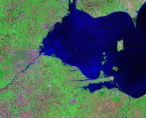
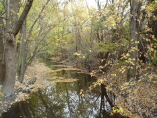
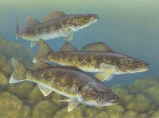
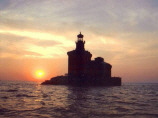
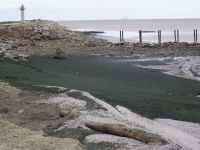
Lyngbya wollei on the shore
~ Currents ~